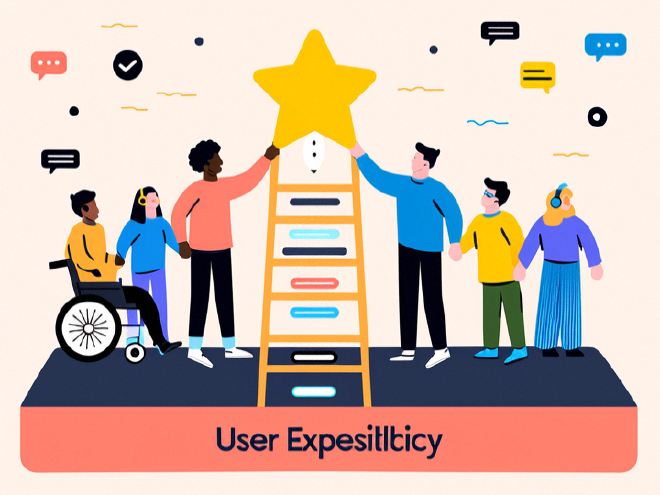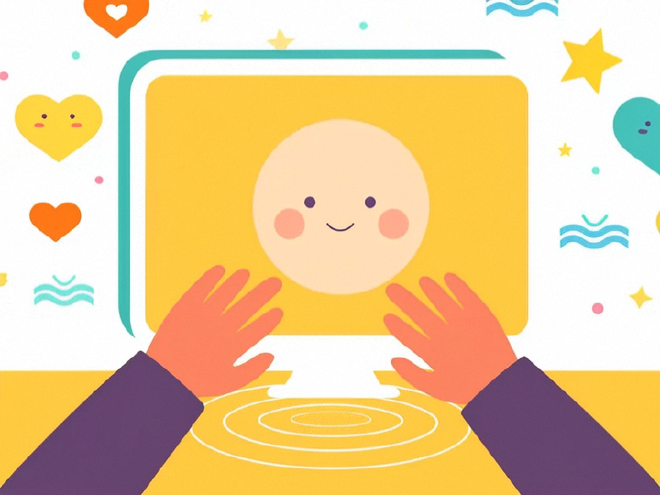- Change Log/
- Tips/
- The Future of User Experience Design: From 'Interface Friendliness' to 'Emotional Connection'/
The Future of User Experience Design: From 'Interface Friendliness' to 'Emotional Connection'
Table of Contents
The Future of User Experience Design: From “Interface Friendliness” to “Emotional Connection” #
Introduction: Why Are Users Becoming Increasingly Picky? #
Imagine this: You open an app—clean interface, clear buttons, intuitive navigation—all looking “professional.” Yet, you don’t stick around; in fact, you uninstall it after just a few uses.
Why?
Because—it simply didn’t resonate with you.
By 2025, users are no longer satisfied with products that are merely “easy to use.” Instead, they crave experiences that feel understood. As a result, the focus of User Experience (UX) Design is shifting dramatically—from interface friendliness to fostering deeper emotional connections. This isn’t just a trend; it’s the next evolutionary step in how we design for people.
Section 1: Emotional Design—Making Products “Understand Your Heart” #
1.1 What Is Emotional Design? #
Emotional Design goes beyond making interfaces look “warm” or inviting. It leverages visuals, interactions, copywriting, and even subtle micro-animations to evoke positive emotions, building a meaningful bond between your brand and its users.
Key Takeaway: Emotional connection, user experience design
1.2 The Three Dimensions of Emotional Design #
-
Visual Emotion: The combination of colors, fonts, and illustrations can directly influence how users feel. For instance, soft hues and rounded icons create a sense of calm, while high-contrast designs with sharp lines may convey strength or urgency.
-
Interaction Emotion: Loading animations, feedback cues, and visual representations of successful actions all make users feel “heard” and acknowledged. For example, when a user completes a purchase, a smiling illustration or a heartfelt message like “Thank you for trusting us” feels far more impactful than a plain “Order submitted successfully.”
-
Content Emotion: Copywriting isn’t just about conveying information—it’s about adding warmth and personality. Netflix’s “Continue Watching” prompt, for instance, reflects an understanding and respect for user behavior.
1.3 Case Study: How Apple “Stirs Hearts” #
Apple isn’t just a tech company—it’s a storyteller at heart. From the unboxing experience to the thoughtful animations within its operating system, and even the empathetic tone of its customer service (“We understand how you feel”), Apple’s design consistently revolves around one core principle: making users feel valued and cared for.
Section 2: Accessibility Design—Real User-Friendliness Isn’t Optional, It’s Essential #
2.1 Accessibility Design Isn’t Just for “a Few” #
Many people mistakenly believe that Accessibility Design serves only individuals with disabilities. In reality, it’s about creating a more inclusive and user-friendly experience for everyone.

Key Takeaway: Accessibility design, user experience design
2.2 The Five Core Principles of Accessibility Design (WCAG Standards) #
- Perceivable: Content must be accessible to users in various ways, such as providing text alternatives for images.
- Operable: All features should be usable via keyboard or voice commands.
- Understandable: Interfaces and interactions must be clear and easy to follow.
- Compatible: Support for assistive technologies like screen readers is essential.
- Adaptable: Allow users to customize elements like font size and contrast to suit their needs.
2.3 Case Study: How Instacart Optimized Its Accessibility Experience #
Instacart integrated features like voice-guided navigation, high-contrast modes, and clearly labeled buttons into its app. Not only did these enhancements improve usability for users with disabilities, but they also made the platform easier for older users to navigate. As a result, Instacart saw a 12% increase in user retention and a significant boost in brand loyalty.
Section 3: Immersive Interactions—The Magic of Design That Makes Users “Forget Time” #
3.1 Immersive Interaction ≠ Fancy Animations #
Immersive Interaction doesn’t mean piling on flashy animations and effects. Instead, it’s about crafting seamless, fluid, and rhythmically paced interactions that keep users fully engaged with the content itself—rather than distracted by the mechanics of the process.
Key Takeaway: 2025 trends, user experience design
3.2 Four Strategies for Building Immersive Experiences #
-
Micro-interaction Design: Think of the animated feedback when you tap a like button or the instant validation messages in input fields—these small touches enhance the feeling of engagement.
-
Context-Aware Design: Tailor the interface dynamically based on the user’s current state or actions. For example, after a user spends a long time browsing products, automatically suggest “pairings you might love.”
-
Full-Screen and Gesture-First Design: On mobile devices, gestures like swiping and long-pressing have become the norm. When used thoughtfully, they can significantly improve efficiency and ease of use.
-
Progressive Guidance: Don’t overwhelm users right from the start. Instead, gently guide them when they’re ready—like offering help exactly when they need it most.
Section 4: How to Bring These Trends to Life? Three Actionable Optimization Tips #
4.1 Start With a “User Journey Map” to Identify Emotional Touchpoints #
Don’t just map out functional flows—focus on emotional journeys instead. Ask yourself:
- Do users feel welcomed during registration?
- Do they experience a sense of accomplishment after completing a task?
- Are they supported when encountering challenges?
4.2 Invest in Accessibility Design to Enhance Brand Inclusivity #
Rather than treating accessibility as an afterthought, integrate it into your design process from the very beginning. Beyond being the right thing to do morally, it’s also smart business—it broadens your audience and strengthens your brand’s reputation.
4.3 Use Data to Drive Emotional Design #
Emotional connections aren’t built on intuition alone—they’re refined through continuous iteration based on user behavior data. For example:
- Which pages have high bounce rates? Could it be due to a lack of emotional guidance?
- Which features see low usage? Might it be because the interaction feels unnatural?
Conclusion: The Future of Design Isn’t Just About Being “Useful”—It’s About Being “Meaningful” #
In the future of UX design, it’s no longer enough to create products that are merely “user-friendly.” Today’s consumers crave experiences that feel understood, respected, and even deeply connected on an emotional level.
By 2025, the brands that truly succeed will be those that go beyond functionality, using design to tell stories and deliver warmth through every interaction.
Key Takeaway: User experience design, emotional connection, 2025 trends, accessibility design, interface friendliness
So, it’s time to rethink your approach:
Are you building a “product,” or are you crafting a relationship?
Now It’s Your Turn:
Is your team already starting to prioritize the “emotional factors” in your user experience design?
Share your thoughts or examples in the comments below!
